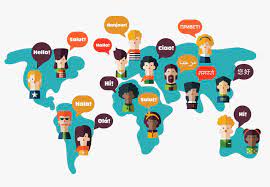The Art of Learning a Language
Learning a new language is like unlocking a door to a whole new world. It opens up opportunities for communication, cultural exploration, and personal growth. Whether you’re studying French, Spanish, Mandarin, or any other language, the journey of learning a new language is both challenging and rewarding.
Benefits of Learning a Language
Mastering a new language goes beyond just being able to converse with native speakers. It enhances cognitive abilities, improves memory retention, and boosts problem-solving skills. Additionally, learning a language can broaden your career prospects and make you more culturally aware and empathetic.
Tips for Effective Language Learning
Immerse Yourself: Surround yourself with the language as much as possible through movies, music, books, and conversations with native speakers.
Practice Regularly: Consistent practice is key to language acquisition. Set aside dedicated time each day to engage with the language.
Use Technology: Take advantage of language learning apps, online resources, and interactive tools to supplement your learning process.
Join Language Exchange Programs: Connect with others who are learning the same language or are native speakers looking to learn your language. This can provide valuable practice opportunities.
Persistence is Key
Learning a new language requires patience and perseverance. There will be moments of frustration and challenges along the way, but staying committed to your goal will lead to fluency and proficiency over time.
Remember that making mistakes is part of the learning process—embrace them as opportunities for growth. Celebrate small victories along the way and keep pushing yourself to reach higher levels of linguistic mastery.
In Conclusion
The journey of learning a new language is an enriching experience that not only expands your linguistic abilities but also broadens your horizons in ways you may never have imagined. So dive into the world of languages with enthusiasm and dedication—the rewards are boundless.
Essential FAQs for Language Learners: Methods, Levels, and Importance
- How can I teach myself to learn a language?
- What are the 5 steps to learning a language?
- What is language level A1 A2 B1 B2 C1 C2?
- How do I start learning a language?
- Why is learning a language important?
- What is the 15/30/15 method?
- What is learning a language?
How can I teach myself to learn a language?
For those wondering how to teach themselves a new language, self-learning can be a rewarding and empowering journey. With the plethora of resources available today, individuals can take charge of their language acquisition process. Setting clear goals, creating a structured study plan, immersing oneself in the language through media and conversations, and staying consistent in practice are key strategies for successful self-taught language learning. Embracing mistakes as part of the learning process and seeking opportunities for real-world application can further enhance one’s linguistic skills. By harnessing determination and dedication, individuals can unlock the door to fluency in a new language through self-guided learning.
What are the 5 steps to learning a language?
Embarking on the journey of learning a new language often raises the question: “What are the 5 steps to learning a language?” The process typically involves setting clear goals, immersing oneself in the language through various mediums, practising consistently, seeking opportunities for real-life communication, and embracing mistakes as part of the learning experience. By following these steps diligently, language learners can progress steadily towards fluency and develop a deeper understanding of the culture associated with the language they are mastering.
What is language level A1 A2 B1 B2 C1 C2?
Language levels such as A1, A2, B1, B2, C1, and C2 are part of the Common European Framework of Reference for Languages (CEFR), which provides a standardised way to describe language proficiency. Each level corresponds to a specific set of skills and abilities in listening, speaking, reading, and writing. A1 and A2 represent basic or beginner levels where individuals can understand and use simple phrases. Moving up to B1 and B2 signifies intermediate proficiency with the ability to handle more complex language tasks. C1 and C2 denote advanced levels where individuals can engage fluently in discussions, comprehend nuanced texts, and express themselves with precision. Understanding these language levels helps learners gauge their progress and set achievable goals on their language learning journey.
How do I start learning a language?
Embarking on the journey of learning a new language can be both exciting and daunting, especially if you’re unsure of where to begin. To start learning a language, it’s essential to set clear goals and establish a solid foundation. Begin by choosing a language that interests you and aligns with your personal or professional objectives. Next, familiarise yourself with basic vocabulary, grammar rules, and pronunciation through introductory courses or online resources. Immersing yourself in the language by listening to native speakers, practising daily, and engaging in conversations will help you build confidence and fluency over time. Remember that consistency is key, so stay motivated and embrace the learning process with curiosity and dedication.
Why is learning a language important?
Understanding the importance of learning a language is akin to grasping the key to unlocking a myriad of opportunities and enriching experiences. Language acquisition not only facilitates effective communication with people from diverse cultures but also fosters cognitive development, enhances career prospects, and promotes cultural empathy and understanding. By mastering a new language, individuals gain access to a broader world view, enabling them to connect on a deeper level with others and navigate the global landscape with confidence and proficiency.
What is the 15/30/15 method?
The 15/30/15 method is a popular language learning technique that involves breaking down study sessions into focused intervals. In this method, learners dedicate 15 minutes to learning new material, followed by 30 minutes of intense practice or application of the newly acquired knowledge, and then another 15 minutes for review and reinforcement. This structured approach helps learners maximise their study time, improve retention of information, and enhance overall language proficiency through consistent and targeted practice sessions.
What is learning a language?
Learning a language is a transformative journey that involves acquiring the skills to communicate effectively in a new linguistic system. It goes beyond memorising vocabulary and grammar rules; it encompasses understanding cultural nuances, developing listening and speaking proficiency, and embracing the beauty of linguistic diversity. Learning a language is about immersing oneself in a world of expression, connection, and discovery, where each word learned opens up new possibilities for meaningful interaction and personal growth.



